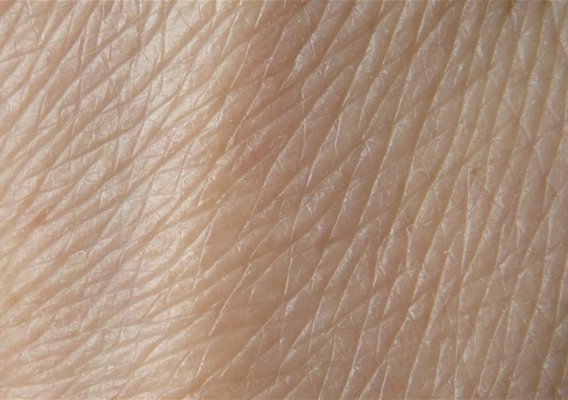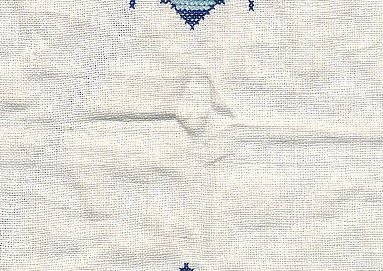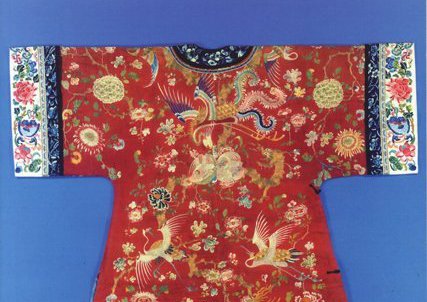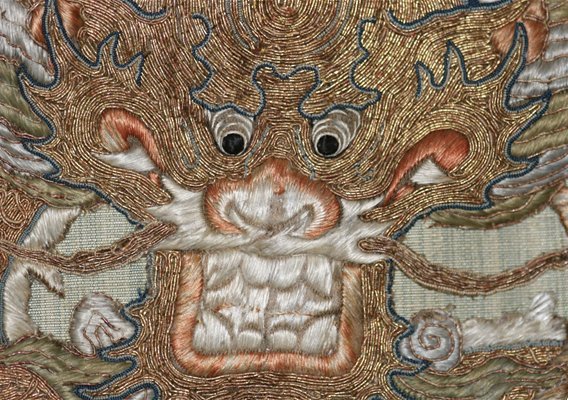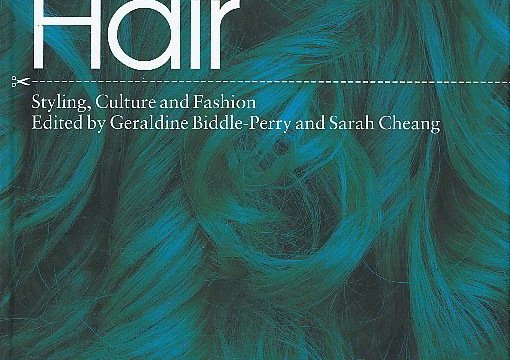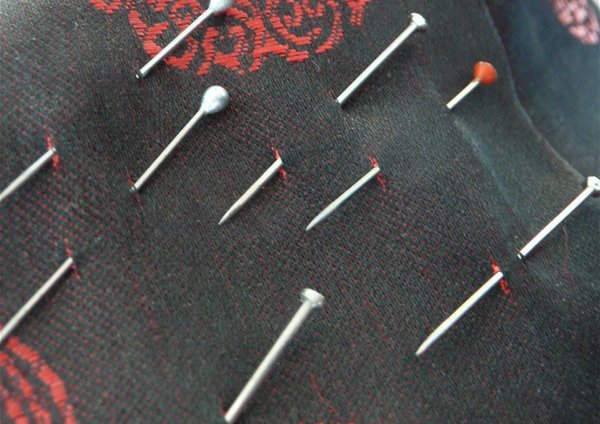
Sarah is a design historian. Her wide-ranging practice focuses on East Asian material culture and the body, with a special interest in fashion and race.
Sarah Cheang joined the RCA in 2011, and has led the History of Design Programme since 2020. A founder member of the Research Collective for Decoloniality and Fashion, Sarah works closely with a group of international scholars and activists who look to counter Eurocentricism in fashion studies and more inclusive and caring world-views in the fashion industry.
Sarah’s teaching interests reflect a commitment to shape more inclusive curricula and decolonial approaches to global history. Recent research and teaching have focussed on concepts of decolonial aesthesis, through experimental teaching methods and the research-led initiative OPEN. Issues of gender, race and ethnicity are often uppermost in her work, and she chaired the Design History Society Equalities Working group 2019–20.
Key details
School, Centre or Area
Expertise
Gallery
More information
Research interests
Sarah has a special research interest in Chinese material culture and histories of fashion, domestic interiors and pet keeping. Her co-edited collection, Hair: Styling, Culture and Fashion (2008), and continued research, artworks and publishing on hair have also led to contributions to magazines, exhibitions, festivals, radio and television.
Sarah led the AHRC Network Project Fashion and Translation: Britain, Japan, China Korea (2014–2015), as well as convening events on global design and cultural translation. She co-edited a special edition of International Journal of Fashion Studies on East Asian fashion (2017), and is preparing for publication a book entitled Sinophilia which is a new study of twentieth-century chinoiserie and fashion.
She recently co-edited the collection Rethinking Fashion Globalisation (2021), and the special issue of International Journal of Fashion Studies entitled ‘Decolonizing as Process’ (2022). She has co-authored a number of papers on decolonial approaches to teaching and researching in the art college and in history of design writing.
Sarah holds a BA in History of Design from Brighton University, an MA in Art History from Sussex University. She completed her DPhil at Sussex University in 2003. Her work on Western representations of China, and more particularly the collecting and consumption of Chinese material culture in Britain from 1890, has led to prize-winning publications on ceramics, textiles, interior design, and even Pekingese dogs. She also curated the twentieth-century section of the exhibition Chinese Whispers: Chinoiserie in Britain 1650–1930 (Brighton Museum and Royal Pavilion, 2008), which won best temporary exhibition at the Museum and Heritage Awards.
Practice
Sarah Cheang is a regular speaker at national and international conferences, gallery debates, festivals and specialist study days, and has published widely in scholarly books and journals.
Her published works include: ‘The Dogs of Fo: Gender, Identity and Collecting’ in Collectors: Expressions of Self and Other (Horniman Museum, 2001); ‘Women, Pets and Imperialism: The British Pekingese Dog and Nostalgia for Old China’ in Journal of British Studies (2006); ‘Selling China: Class, Gender and Orientalism at the Department Store’ in Journal of Design History (2007); ‘“Our Missionary Wembley”: China, Local Community and The British Missionary Empire, 1901-1924’ in East Asian History (2007); ‘What’s in a Chinese Room?: 20th Century Chinoiserie, Modernity and Femininity’ in Chinese Whispers: Chinoiserie in Britain 1650–1930 (Royal Pavilion & Museums, 2008); Hair: Styling, Culture and Fashion, co-edited with Geraldine Biddle-Perry (Berg, 2008); ‘Dragons in the Drawing Room: Chinese Embroideries in British Homes, 1860–1949’ in Textile History 39.2 (2008); ‘Chinese Robes in Western Interiors: Transitionality and Transformation’ in Fashion, Interior Design and the Contours of Modern Identity (Ashgate: 2010); ‘“To the Ends of the Earth”: Fashion and Ethnicity in the Vogue Fashion Shoot’ in Fashion Media: Past and Present (Bloomsbury, 2013); ‘Re-Imagining the Dragon Robe: China chic in Early Twentieth Century European Fashion’ in Global Textile Encounters (Oxbow Boks, 2014); ‘Fashion, Chinoiserie and Modernism’ in Chinoiserie and British Modernism (Edinburgh Press, 2015); ‘Cornrow Culture’ in MacGuffin: The Life of Things 3 (2016); ‘Being Human: Hair, Skin and the Work of Silvia B.’ in Silvia B.: Of Beauty and Doubt (Jap Sam Books, 2016); ‘“Specimens of Coiffures”: Hair, Fashion, Race and Ethnicity’ in Studies in Textiel 5 (2017); ‘Ethnicity’ in A Cultural History of Fashion Volume 5 (the Age of Empire) (Bloomsbury, 2017); ‘Fashion and East Asia: Cultural Translations and East Asian Perspectives’ in International Journal of Fashion Studies 4.2 (2017); ‘Fashion, Chinoiserie and the Transnational: Material Translations between China, Japan and Britain,’ in Beyond Chinoiserie: Artistic Encounters between China and the West during the Qing Dynasty (Brill, 2018); ‘Decolonizing the Curriculum? Transformation, Emotion and Positionality in Teaching’ (co-authored with Shehnaz Suterwalla) Fashion Theory 24.6 (2020); ‘Explorations in the OPEN’ (co-authored with Shehnaz Suterwalla) Aesthetic Literacy: A Book for Everyone (forthcoming); Rethinking Fashion Globalization (co-edited with Erica De Greef and Takagi Yoko) (Bloomsbury 2021); Sinophilia: Fashion, Western Modernity and Things Chinese after 1900 (Bloomsbury, forthcoming).
Sarah was Principal investigator for the AHRC Network Project Fashion and Translation: Britain, Japan, China, Korea which ran seven workshop events in London, Newcastle, Tokyo and Kyoto in 2014 and 2015. She co-edited a special edition of International Journal of Fashion Studies (2017), publishing a selection of the papers arising from the project. Sarah has also been a member of the steering committee of the Non-Western Fashion conference series/Research Collective for Decolonizing Fashion since 2013, and is on the editorial board for the Handbook of Research on Global Management and Merchandising (IGI Global).
In 2009, she co-organised with Geraldine-Biddle Perry the conference ‘Hair Stories: Practice, Culture, Theory’ (V&A/London College of Fashion), a unique event that brought international scholars of hair into dialogue with artists, hair stylists, curators and film and TV make up professionals.
Sarah also participated as an artist in the exhibition Hair Human Stories (The Library Space, London, 7-26 June 2018).
Sarah curated the twentieth-century section of the exhibition Chinese Whispers: Chinoiserie in Britain 1650-1930 (Brighton Museum and Royal Pavilion, 2008), and acted as consultant on Chinese embroideries for Japan-tastic: Japanese Inspired Patterns for the British Home, 1880–1930 (Museum of the Domestic Design and Architecture, Middlesex University 2009–2010).
Sarah received the Pasold Prize 2009 for the best article in Textile History, and was subsequently invited to become a member of the Pasold Fund for research into textile history, where she advises on future strategy and referees applications. She reviews prospective articles and book proposals for Berg Publishers, Journal of Design History, The Design Journal, Fashion Theory, Textile History, East Asian History, and Journal of Brand Management.
Awards
Sarah Cheang received an AHRC Network Award as Principal Investigator for the project Fashion and Translation: Britain, Japan, China, Korea. Across three workshops and four fashion collection visits held in the UK and Japan during 2014 and 2015, the project explored the historical roots and contemporary factors of East Asian fashion, to create a new understanding of East Asian fashion’s intra and extra-regional movements and further existing scholarship on transnational design.
Current and recent projects
Sarah has a monograph in preparation entitled Sinophilia, and recently led the AHRC Network Project Fashion and Translation: Britain, Japan, China, Korea.
Rethinking Fashion Globalization
This new collection of essay, co-edited by Sarah Cheang, Erica De Greef and Takagi Yoko, brings together a diverse range of authors to explore how fashion and globalisation can be approached in relation to current debates on decoloniality. The volume shows how new ways of thinking about the colonial and the transnational are affecting the kinds of fashion histories that are being told within Anglophone scholarship. The editors propose new methods of working to try to counter Eurocentric bias within fashion studies and suggest that while decolonial approaches may not be immediately appropriate for every context of study, the questions and problems that are posed for systems of knowledge and power invite researchers, writers, readers and publishers alike to rethink how fashion history is done,
The book (to be published by Bloomsbury in 2021), was developed from a workshop that was co-organised by the JSPS-funded Transboundary Seminar Series and the Research Collective for Decolonizing Fashion at Bunka Gakuen University, 2019. Fashion thinkers from Japan, the Netherlands, Belgium, the United States, the United Kingdom, Singapore, Australia, Ghana, Kenya and South Africa came together to consider how fashion topics rooted anywhere could be approached in less Eurocentric ways. The resulting publication seeks to emphasise the power dynamics of cultural interconnectedness, and the transboundary nature of fashion objects over time, through a range of voices and perspectives, as well as the power dynamics of fashion writing, as a way of answering the decolonial charge to actively counter Eurocentrism in the study and spread of fashion.
Fashion and Translation: Britain, Japan, China, Korea
Translation is an intercultural process through which the foreign is made meaningful and through which the exotic can become domesticated. The interdisciplinary AHRC Network Project Fashion and Translation: Britain, Japan, China, Korea was formed by Sarah Cheang (Principal Investigator) and Elizabeth Kramer (Co-investigator) to examine the role of fashion as a powerful and pervasive cultural intermediary. Across three workshops and four fashion collection visits held in the UK and Japan during 2014 and 2015, the project explored the historical roots and contemporary factors of East Asian fashion, to create a new understanding of East Asian fashion’s intra and extra-regional movements.
Fashion confounds geographical boundaries in a myriad of ways, and yet national and regional identities remain central to the dynamics of fashionable dress as cultural expression, economic strategy and international politics. Papers drawn from the Project’s workshops were published in a special issue of International Journal of Fashion Studies 4.2 (2017), capturing the current debates that were developed and new directions that were revealed through the Network’s activities. By paying particular attention to the materiality of fashion as well as the multiple cultural fields within which fashion operates, and by decentring Euro-American fashion cultures in favour of East Asia, we furthered existing scholarship on transnational fashion in a sustained dialogue between European and non-European perspectives on the circulation of fashion. Using a range of voices, this new reading of East Asian fashion modelled theoretical and practical frameworks for translations between both cultures and disciplines.
Sinophilia
Sinophilia – a love of Chinese things – was an important part of fashionable identities in the early twentieth century. This book, to be published by Bloomsbury, offers a new theoretical approach to femininity, representations of the Orient, and Chineseness in western spaces. Original interrelated case studies in fashion, textiles, retailing, interior design, collecting and pet keeping explore the multi-faceted meanings of fashion and China in western society. The aim is to elucidate and evaluate the specific ways that notions of China were involved in the making of British homes and the clothing of Caucasian British bodies, articulating ideas about modernity and nation, empire, gender, race, class, and sexuality.
Fashion and Ethnicity
The sense of social belonging and individuality that fashion engenders can include ethnicity, yet often seems to transcend matters of race, nation and ethnicity through a set of cultural dynamics linked to globalisation and histories of cultural imperialism. Through her on-going teaching and writing on this subject, Sarah Cheang has developed a body of work that challenges assumptions about ethnicity and fashion by re-examining the relationship between concepts of fashion and ethnic identity. These activities include international keynote addresses, public debates, conference papers, publications such as ‘“To the Ends of the Earth”: Fashion and Ethnicity in the Vogue Fashion Shoot‘ (2013) or ‘Ethnicity’ in A Cultural History of Fashion Volume 5 (2017), and participation in the steering committee for the Non-Western Fashion Conference series/Research Collective for Decolonizing Fashion. Through this work, a new critique of fashion and its systems is being developed by foregrounding matters of ethnicity.
Hair: Styling, Culture and Fashion
This volume, co-edited by Sarah Cheang and Geraldine Biddle-Perry, brought together new essays by eighteen authors on the cultural meanings of hair. The dynamic role of head and body hair for social expression is explored in this cross-cultural collection that encompasses fashion, film, art, history, literature, performance and consumer culture, with specific contributions by Sarah on the manipulation hair in the production of racial difference. In 2009, she also co-organised with Geraldine-Biddle Perry the conference ‘Hair Stories: Practice, Culture, Theory’ (V&A/London College of Fashion), a unique event that brought international scholars of hair into dialogue with artists, hair stylists, curators and film and TV make up professionals. Sarah has acted as an advisor on hair cultures for organisations as varied as magazines Vogue and Elle, National Geographic television channel, and Dove international marketing. She continues to contribute to hair-related research projects and events, for example HAIR! Human hair in fashion and textiles, Centraal Museum Utrecht (2016) and The Personal, Fashionable and Archival Spaces of Hair symposium, Somerset House, London (2016). Alongside a range of publications exploring histories of hair human hair, especially in relation to race, Sarah has developed a body of photographic artworks, first exhibited artist in the exhibition Hair Human Stories (The Library Space, London, 7-26 June 2018).
Publications, exhibitions, other outcomes
Books
Cheang, S. (forthcoming) Sinophilia: Fashion, Western Modernity and Things Chinese after 1900. London: I. B. Tauris
Edited Books and Special Issues
Cheang, S., de Greef, E., Takagi Y. (eds.) (2021) Rethinking Fashion Globalization. London: Bloomsbury.
Cheang, S., Rabine, L. and Sandhu, A. (eds.) (2022) Decolonizing and Process, International Journal of Fashion Studies.
Cheang, S. and Kramer, E. (eds.) (2017)
Fashion and East Asia, International Journal of Fashion Studies.
Cheang, S. and Biddle-Perry, G. (eds.) (2008) Hair: Styling, Culture and Fashion. Oxford: Berg
Journal Articles
Cheang, S.. Irani, K., Rezende and Suterwalla, S. (2023) ‘In Between Breaths: Memories, Stories and Otherwise Design Histories.’ Journal of Design History 36(1).
Cheang, S. Rabine, L. and Sandhu, A. (2022) ‘Decolonizing fashion [studies] as process’ International Journal of Fashion Studies, 9 (3): 247-255.
Cheang, S. (2022) ‘Pausing for thought: Lost and found’, International Journal of Fashion Studies, 9(3): 429-437.
Cheang, S. and Suterwalla, S. (2020) ‘Decolonizing the Curriculum: Transformation, Emotion and Positionality in Teaching’ Fashion Theory 24(6): 879-900.
Cheang, S and E. Kramer (2017) ‘Fashion and East Asia: Cultural Translations and East Asian Perspectives’, International Journal of Fashion Studies 4.2, 145-155.
Cheang, S. (2017) “Specimens of Coiffures”: Hair, Fashion, Race and Ethnicity’, Studies in Textiel 5, 89-103.
Cheang, S. (2008) ‘Dragons in the Drawing Room: Chinese Embroideries in British Homes, 1860–1949’, Textile History 39 (2), 223-249
Cheang, S. (2008) ‘“Our Missionary Wembley”: China, Local Community and The British Missionary Empire, 1901-1924’, East Asian History issue 32/33 (June 2007/Dec 2007), 177-198
Cheang, S. (2007) ‘Selling China: Class, Gender and Orientalism at the Department Store’, Journal of Design History 20.1, 1-16.
Cheang, S. (2006) ‘Women, Pets and Imperialism: The British Pekingese Dog and Nostalgia for Old China’, Journal of British Studies. 45.2 (April), 359-387
Articles and chapters in edited collections
Cheang, S. and Suterwalla, S. (forthcoming) ‘Explorations in the OPEN’ In Valery Vinogradovs (ed). Aesthetic Literacy: A Book for Everyone. Volume III. Melbourne: Mont Publishing.
Cheang, S. (2022) ‘Being Chiang Yee: Feeling, Difference and Story-telling’ in P. Bevan, A. Witchard and D. Zheng (eds). Chiang Yee and his Circle: Chinese artistic and intellectual life in Britain 1930–1950. Hong Kong University Press.pp.37-50.
Cheang, S. (2021) ‘“Ici reside le secret de notre force”: LOfficiel as Globalism’ in L’Officiel 100: One Hundred People and ideas from a Century in Fashion. Marsilio, pp.260-263
Cheang, S. and Kramer, E. (2021) ‘Global connections and fashion histories: East Asian embroidered garments’ in S. Cheang, E. de Greef and Takagi Y (eds), Rethinking Fashion Globalization, London: Bloomsbury, pp. 37-64.
Cheang, S. (2018) ‘Fashion, Chinoiserie and the Transnational: Material Translations between China, Japan and Britain’, in P. Chu and J. Milam (eds.), Beyond Chinoiseries: Artistic Encounters between China and the West during the Qing Dynasty. Leiden: Brill, pp.
Cheang, S. (2018) ‘Women, Pets and Imperialism’ republished in S. McHugh and G. Marvin (eds.) Human-Animal Studies Volume 1: Eastern. Routledge, pp359-387.
Cheang, S. (forthcoming) ‘Fashion, Chinoiserie and the Transnational: Material Translations between China, Japan and Britain’, in P. Chu and J. Milam (eds.), Beyond Chinoiseries: Artistic Encounters between China and the West during the Qing Dynasty. Leiden: Brill
Cheang, S. (2016) ‘Being Human: Hair, Skin and the Work of Silvia B.’ in Silvia B.: Of Beauty and Doubt. Heijningen: Jap Sam Books
Cheang, S. (2017) ‘Ethnicity’, in L. Baxter (ed.), A Cultural History of Dress and Fashion volume 5 (Age of Empire). London: Bloomsbury
Cheang, S. (2015) ‘Fashion, Chinoiserie and Modernism’ in A. Witchard (ed.), Chinoiserie and British Modernism, Edinburgh: University of Edinburgh Press, 133-155
Cheang, S. (2014) ‘Re-imagining the Dragon Robe: China Chic in Early Twentieth Century European Fashion’, in M. Nosch, Z. Feng and L. Varadarajan (eds.), Global Textile Encounters, Oxford: Oxbow Books, 205-211
Cheang, S. (2013) ‘To the Ends of the Earth: Fashion and Ethnicity in the Vogue Fashion Shoot’ in D. Bartlett, S. Cole and A. Rocamora (eds.), Fashion Media. London: Berg, 35-45
Cheang, S. (2013) ‘Selling China: Class, Gender and Orientalism at the Department Store’, in L. Iarocci (ed.) Visual Merchandising: The Image of Selling. Farnham: Ashgate, 117-136
Cheang, S. and Biddle-Perry, G. (2011) ‘Hair’, in Berg Encyclopedia of World Dress and Fashion, online update
Cheang, S. (2010) ‘Chinese robes in western interiors: transitionality and transformation’, In A. Myzelev and J. Potvin (eds.), Fashion, Interior Design and the Contours of Modern Identity. Farnham: Ashgate, 125-145.
Cheang, S. (2008) ‘Roots: Hair and Race’, in G. Biddle-Perry and S. Cheang (eds.), Hair: Styling, Culture and Fashion, Oxford: Berg, 27-42
Cheang, S. (2008) ‘What’s in a Chinese Room?: 20th Century Chinoiserie, Modernity and Femininity’ in D. Beevers (ed.), Chinese Whispers: Chinoiserie in Britain 1650-1930, Brighton: The Royal Pavilion & Museums, 74-81
Cheang, S. (2001) ‘The Dogs of Fo: Gender, Identity and Collecting.’ In A. Shelton (ed.), Collectors: Expressions of Self and Other. London/Coimbra: Horniman Museum/Museu Antropologicao da Universidade de Coimbra, 55-72
External collaborations
Sarah Cheang is a regular reviewer of manuscript proposals for Bloomsbury Publishers, and for academic journals such as Journal of Design History, The Design Journal, Fashion Theory, International Journal of Fashion Studies; Textile History, East Asian History, and Journal of Brand Management.
Sarah has also been a member of the steering committee of the Non-Western Fashion conference series/Research Collective for Decoloniality and Fashion since 2013, and is on the editorial board for The Handbook of Research on Global Management and Merchandising (IGI Global). She is also a member of the advisory board for the Fashion and Race database and a founder member of the OPEN research collective. She chaired the Design History Society Equalities Working Group 2019-20.
Sarah curated the twentieth-century section of the exhibition Chinese Whispers: Chinoiserie in Britain 1650–1930 (Brighton Museum and Royal Pavilion, 2008), and acted as consultant on Chinese embroideries for Japan-tastic: Japanese Inspired Patterns for the British Home, 1880-1930 (Museum of the Domestic Design and Architecture, Middlesex University 2009–2010).
